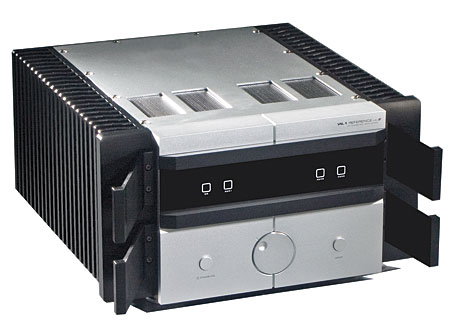Unfortunately I don't think your perception is wrong. It generally matches most Class D Amps subjective impressions for these possible reasons.
View attachment 182403
I am not intending to disparage the PA5 in any way as it actual design extracts the most out of the TPA32XX IC design layout. Kudos to topping for "Real World" implementation of this chipset.
Unfortunately it exposes the issue of SINAD being perceived as synonymous with "transparency" . What is more perplexing is why IMD tests and SINAD do not reveal this distortion above 5K.
View attachment 182414
Since the PA05 SINAD measures so close to the the Highly revered Benchmark AHB2 I will quote John Siau from
https://www.audiosciencereview.com/...ements-of-benchmark-ahb2-amp.7628/post-180468
"Harmonic distortion may change the sound of a musical instrument long before we can recognize the fact that the music is distorted. The ratios of harmonics to the fundamental give each musical instrument its unique voice. Any time you add harmonic distortion, you make changes to this voicing."
Another test MISSING is the KEY test of Linear Phase Response.
I again quote John Siau regarding the Benchmark AHB2
"A non-linear phase response may be more audible than a non-linear frequency response. Errors in the phase response may create the impression that the frequency response is different. The frequency response of the AHB2 extends down to 0.1 HZ and up to 500 kHz so that the phase response is linear within the 20 Hz to 20 kHz audible band."
John Siau really summarizes Amplifier technology design issues in an easy palatable way. His posts on this forum are well worth a read.
Phase linearity and Harmonic Frequency distortion seems to be the "Achilles Heel" in Class-D implementations.
Phase Linearity is vital for proper soundstage and localization. Multichannel DSP uses Phase to localize. Actually your ears and brain do.
HYPEX Ncore and PURIFI foremost are diligently trying to address the 5khz to 20khz Harmonic/Phase linearity issues in Switching AMP design.
High bandwidth Amplifier design in the likes up to 3to600khz is specifically intended to do this to maintain Phase linearity. We as a whole take this for granted in Class A/B designs as a solved issue because it was 30-40 years ago.
I highly doubt the PA05 is transparent in audio in fact I would assert it colorizes high frequencies in different but similar way "tube" designs do.
There is a definite Harmonic frequency distortion above 5k being added. I call it harmonic eq that ads sizzle to say cymbals for example. But at the cost of disturbing timbre, vital localization phase cues and soundstage.
Speakers do this as well but constant directivity designs with time alignment are vastly improving transparency in audio production. The speaker variable is difficult enough, we do not need other devices in the signal path adding more anomalies.
I admittedly have tricked myself before loving the Class-D sound. Embarrassingly recommending it until I realized with much research with said Harmonic/Phase issues that I was doing the same thing as "tube" guys. I perceived it through my own subjective personal bias that this flavor was new and different so it must be better. I had one set of speakers that it really made shine. Since the components of these speakers were extremely high quality it HAD to be my signal chain that was lacking, so I thought...
At the same time, we are all entitled to colorize,DSP, eq and compensate for our inferior home listening environments to what we enjoy.
Speakers are still the weak link.
I myself was excited and about to purchase the PA05( I have a Topping D10s) because I have had great experience with SINAD thanks to this forum's efforts with DACS and headphone amps. The mission of ASR and Amirs work to bring clarity to the industry is to be applauded.
That said, I doubt in a ABX comparison the Topping PA5 would sound the same as an Benchmark AHB2. I haven't even addressed dynamic transient capabilities like high current designs.
This however strikes at the core of the significance of SINAD value as representing "State of the Art" designs. It seems we need SINAD + phase linearity response test and emphasis on Frequency distortion or at least specifically for Class-D designs. Even DAC's output filters could have Phase linearity issues.
Lets just not equate the Topping PA5 and especially 105db SINAD as a representation of "transparent". Hiss free yes!
I am not trying to Disparage Topping, It just shows that if you give a spec like SINAD high value, Someone will design a device to match that.
So what Tests combined with SINAD will show Transparency?
It seems we need a SINAD+* now.
Thanks AudioArchitech for taking a bullet for us and being candid with your impression. Not letting your logic brain and a tech spec warrior mentality bias your impressions. My budget for the PA5 will be shifted towards maybe the EX5 or Gustard X16.
J-Sine

 . What the multitone test shows is (at least at 5W) that higher frequency distortion is largely above 20KHz, even including IMD products folding back into the audible spectrum.
. What the multitone test shows is (at least at 5W) that higher frequency distortion is largely above 20KHz, even including IMD products folding back into the audible spectrum.
